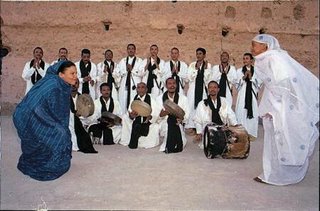
Figuig, drowned in an sea of sand, is a world of its own. Hidden at the centre of the surrounding red mountains, the little city looks like an ocean of palms.
The image is not surprising as Figuig is the largest date palm oasis in Morocco with over 200,000 trees extending over 650 ha.
The first Festival of Oases will be held in Figuig on April 15-16. The event will bring together music bands from several regions in Morocco and other Arab countries.
 Organised under auspices of the Minister of Culture, Mohammed Achaari, and the president of the municipal council of Figuig, the opening of the first International Festival of Oases will take place at Annahda show room.
Organised under auspices of the Minister of Culture, Mohammed Achaari, and the president of the municipal council of Figuig, the opening of the first International Festival of Oases will take place at Annahda show room.The Saharan city will welcome music bands from Kuwait and Saudi Arabia, as part of a cultural exchange.
Bands from Zagora, Tata and Figuig will also participate to highlight the cultural heritage of the regions they represent.
The opening of the festival schedules the screening of a video of traditional arts in Saudi Arabia, the exhibition of pictures of the Moroccan south eastern city entitled “Figuig: the oasis and the architecture.”
An exhibition of the arts and traditions of Figuig area as well as manuscripts and handicrafts is also scheduled on April 15.

The second day of the event will be marked by a conference on “The Agriculture of the Oases.” The conference is organised by the Ministry of Agriculture and Rural Development and the municipality of Figuig.
The event will be closed by music shows performed by the bands from Kuwait, Figuig, Bouarfa and Tata.
While you are in the area have a good look around the area. There are many ksour off the main road, each one within its own palm oasis and enclosed with walls. Each ksour was fiercely independent, fighting each other over limited water and other family feuds, until the 20th century. For the best panoramic view, go to the platform above the Zenaga ksar where you can see most of the palm oasis and the surrounding mountains. The prettiest ksour is called El Maiz. Until 1960, there was a large Jewish population. Now the population is predominately Berber.
Tags: Morocco Fes, Maghreb news

No comments:
Post a Comment